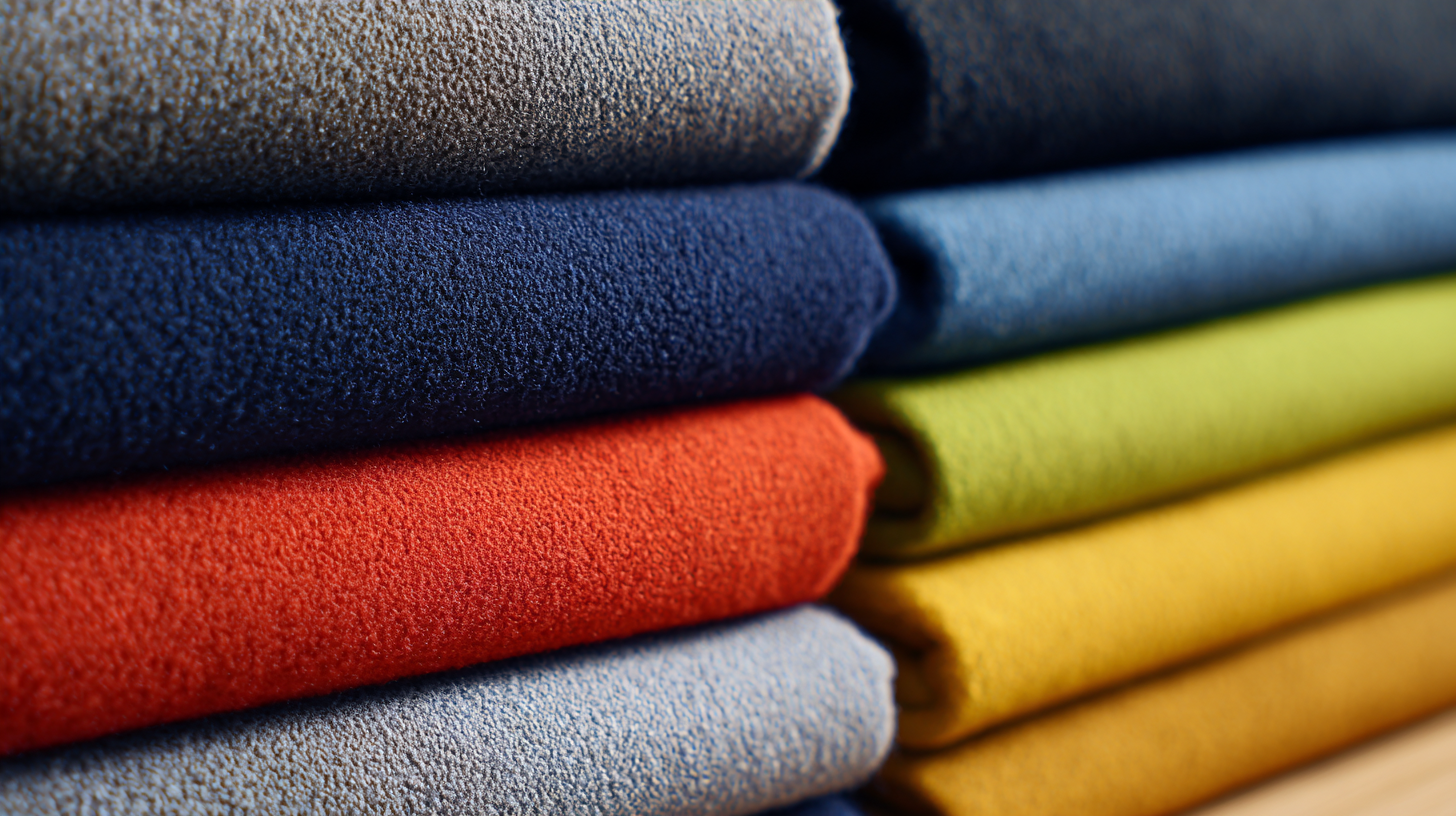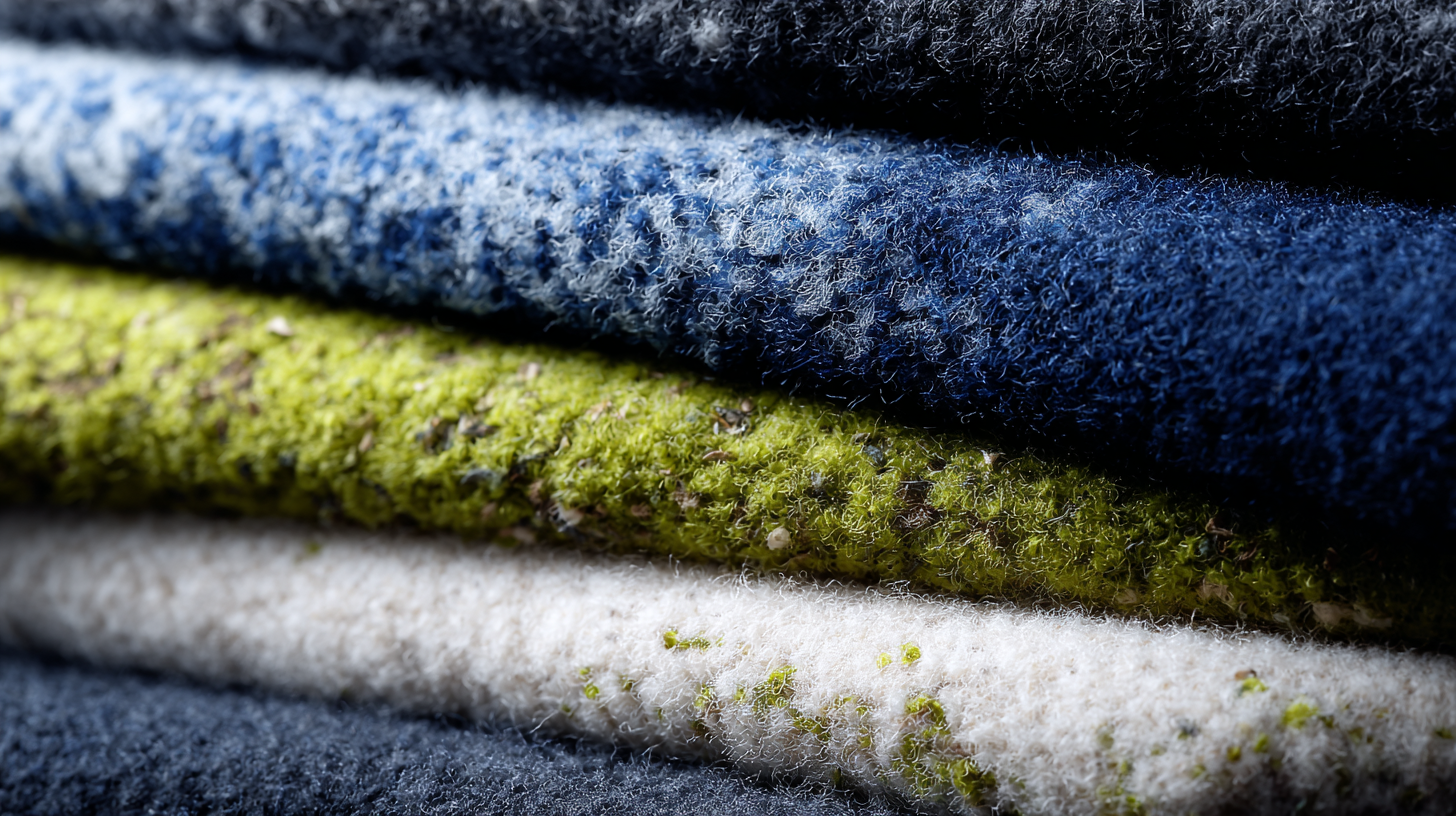In an era where environmental sustainability is increasingly important, the fashion industry faces the challenge of reducing its ecological footprint. One innovative solution lies in the use of recycled fleece fabric, a material that not only repurposes discarded textiles but also offers versatility and comfort for various apparel designs. This guide will explore the process of creating sustainable apparel using recycled fleece fabric, highlighting the benefits of this eco-friendly option. From sourcing materials to manufacturing techniques, we will delve into the steps required to produce stylish and sustainable clothing that contributes to a circular economy. By choosing recycled fleece fabric, designers can play a pivotal role in promoting sustainable fashion while meeting the growing consumer demand for environmentally responsible products. Join us as we uncover practical tips and strategies to harness the potential of recycled fleece fabric in your next clothing collection.

 Recycled fleece fabric has gained significant attention in the sustainable fashion industry due to its eco-friendly properties.
Sourced primarily from post-consumer plastic bottles, old garments, and textile waste,
this fabric transforms discarded materials into wearable products. By diverting plastic from landfills, recycled fleece plays a crucial role
in reducing environmental pollution and promoting a circular economy.
This innovative approach not only conserves resources but also diminishes the demand for virgin materials, resulting in a smaller carbon footprint for apparel production.
Recycled fleece fabric has gained significant attention in the sustainable fashion industry due to its eco-friendly properties.
Sourced primarily from post-consumer plastic bottles, old garments, and textile waste,
this fabric transforms discarded materials into wearable products. By diverting plastic from landfills, recycled fleece plays a crucial role
in reducing environmental pollution and promoting a circular economy.
This innovative approach not only conserves resources but also diminishes the demand for virgin materials, resulting in a smaller carbon footprint for apparel production.
The benefits of using recycled fleece fabric extend beyond environmental impact. This fabric boasts excellent thermal insulation and moisture-wicking properties, making it an ideal choice for outdoor and activewear. Additionally, it is soft, lightweight, and durable, appealing to consumers seeking comfort and longevity in their clothing. Furthermore, as consumers become more environmentally conscious, the demand for sustainable products, including those made from recycled fleece, is on the rise. Manufacturers who embrace this material not only contribute to a healthier planet but also position themselves favorably in a competitive market.
Designing apparel for sustainability begins with understanding the lifecycle of materials. According to the Textile Exchange's 2021 Sustainability Report, the fashion industry contributes to 10% of global carbon emissions, a figure that highlights the urgent need for eco-friendly practices. Utilizing recycled fleece fabric, which can be produced from post-consumer plastic bottles, is a significant step toward reducing this impact. By transforming waste into wearable products, designers reduce landfill contributions while also minimizing the energy required to create new materials. Studies indicate that recycling polyester saves approximately 75% of the energy compared to producing it from virgin resources.
Incorporating sustainable practices into apparel design also involves careful consideration of production techniques. A focus on low-water dye processes, alongside the use of closed-loop systems, can further enhance sustainability. For instance, according to a report by Fashion for Good, using innovative dyeing technologies can reduce water consumption by up to 90%. Moreover, implementing design strategies such as modularity and durability not only enhances the lifecycle of garments but also encourages consumers to invest in quality over quantity. By aligning design techniques with sustainable principles, the apparel industry can take significant strides toward a more responsible future.
The process of transforming recycled fleece into wearable fashion begins with a meticulous sorting and cleaning phase, where post-consumer fleece garments are collected. According to the Environmental Protection Agency, approximately 11.3 million tons of textile waste was generated in 2019 alone, highlighting the urgency of recycling initiatives. After the textiles are sorted, they are processed into small fibers, which are then cleaned and blended with newly sourced materials if necessary. This step ensures that the final product not only meets quality standards but also retains its comfort and durability, essential characteristics for consumer apparel.
Moving forward, the recycled material undergoes a spinning process to create yarns suitable for knitting or weaving. The U.S. textile industry has reported that using recycled materials can reduce water consumption by up to 90%, significantly decreasing the environmental footprint of apparel manufacturing. Once the yarn is formed, it is dyed and transformed into fabric for final production. Designers play a crucial role in this phase, translating recycled fleece into innovative designs that appeal to eco-conscious consumers, ultimately bridging sustainability with modern fashion. This integrated approach not only promotes the use of sustainable materials but also fosters a circular economy within the fashion industry.
This chart illustrates the percentage of different types of materials used in the creation of sustainable apparel made from recycled fleece fabric. The data represents a hypothetical breakdown of material sources typically involved in the manufacturing process.
The textile industry is one of the most resource-intensive sectors, contributing significantly to global energy consumption and waste production. According to a report by the Ellen MacArthur Foundation, the fashion industry was responsible for 1.2 billion tons of greenhouse gas emissions in 2015, equating to more emissions than international flights and maritime shipping combined. To mitigate these impacts, eco-friendly production methods, such as the use of recycled fleece fabric, are becoming increasingly essential. Recycled fleece, made from post-consumer plastic bottles and fabric scraps, not only reduces reliance on virgin materials but also consumes 75% less energy in its production compared to traditional polyester.

In addition to energy savings, employing sustainable practices in apparel manufacturing also addresses waste management. The Zero Waste Alliance reports that approximately 92 million tons of textile waste are generated worldwide each year, with a significant portion ending up in landfills. By utilizing recycled fleece, companies can significantly minimize waste; it is estimated that every ton of recycled polyester eliminates the need for 1.5 tons of virgin materials. Furthermore, eco-friendly production methods often incorporate innovative designs aimed at maximizing material use, thus further reducing waste. Transitioning to sustainable apparel is not only a strategic move for brands seeking to reduce their environmental footprint but also a crucial step towards a more responsible and circular fashion industry.
Creating sustainable apparel from recycled fleece fabric opens up creative avenues not just for design, but also for marketing strategies that engage consumers who prioritize ethical choices. By highlighting the eco-friendly production process, brands can connect emotionally with consumers who are increasingly aware of their purchase impact on the environment.
Tips: Utilize storytelling in your marketing. Share the journey of your fleece fabric—from discarded plastic bottles to stylish clothing. This narrative not only informs but also creates a personal connection, making consumers feel more involved in the sustainability journey.
Additionally, emphasize transparency in your supply chain. Consumers appreciate knowing where their products come from and who made them. By providing detailed information about sourcing, manufacturing practices, and labor conditions, brands build trust and foster a loyal customer base committed to making ethical choices.
Tips: Leverage social media platforms to showcase behind-the-scenes production videos or spotlight stories of artisans. This immersive content can deepen consumer engagement and reinforce your brand's commitment to sustainability.






